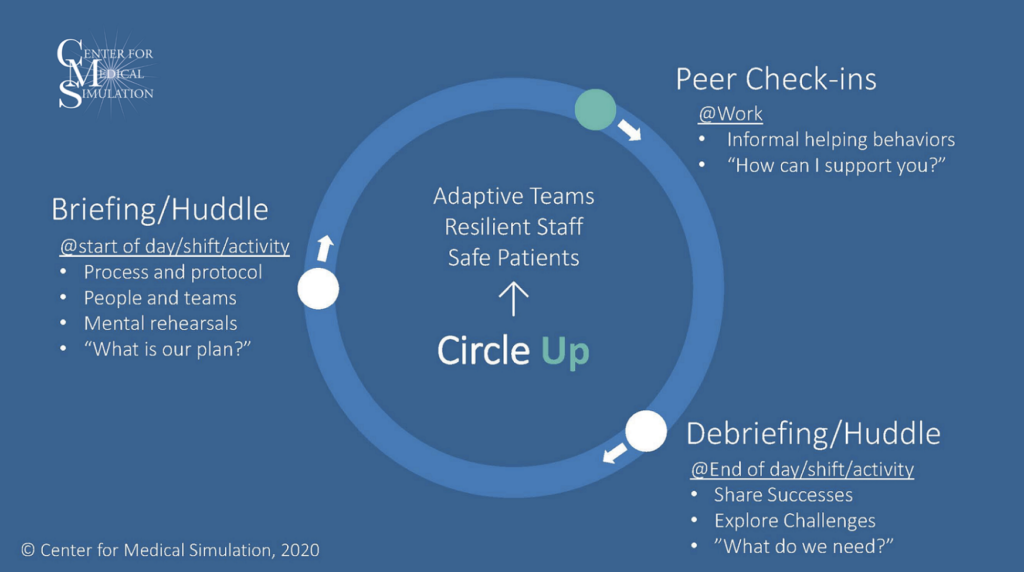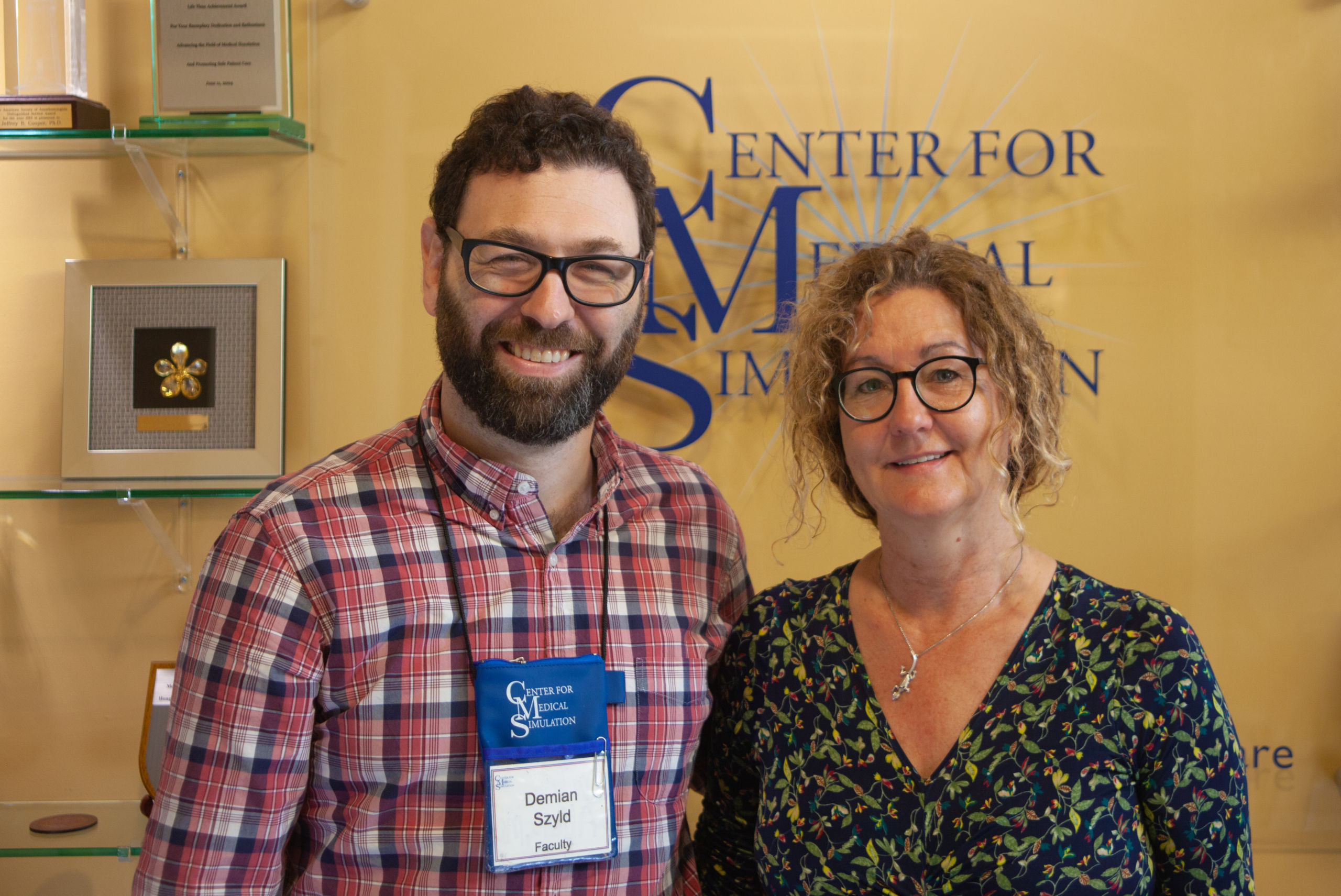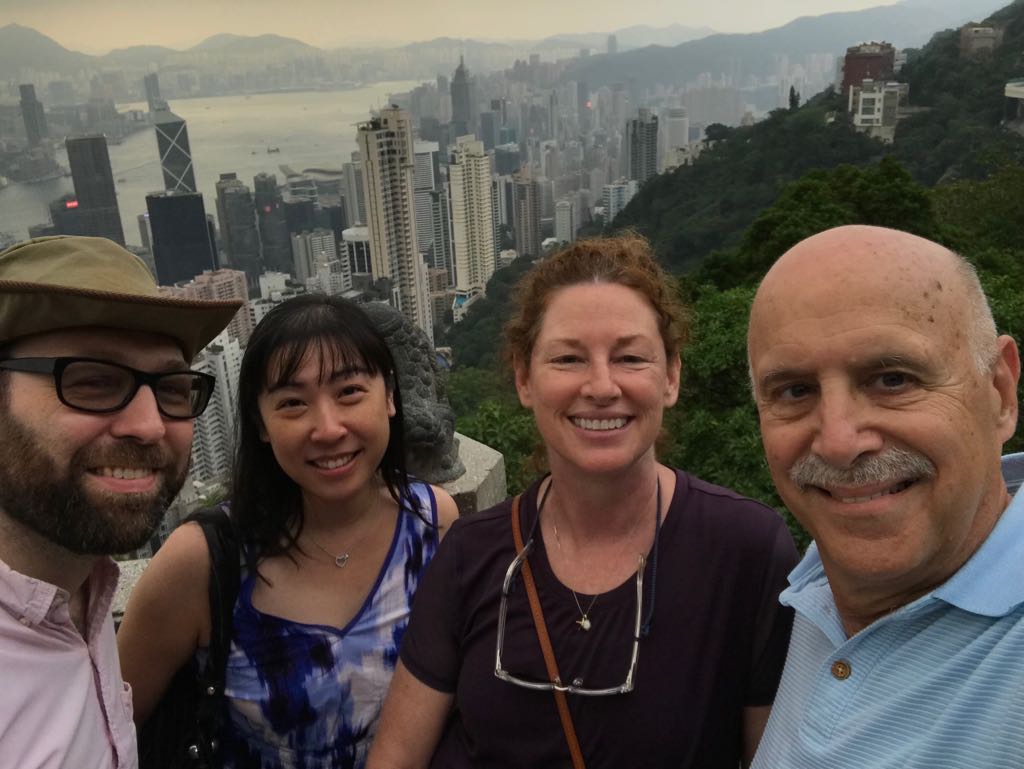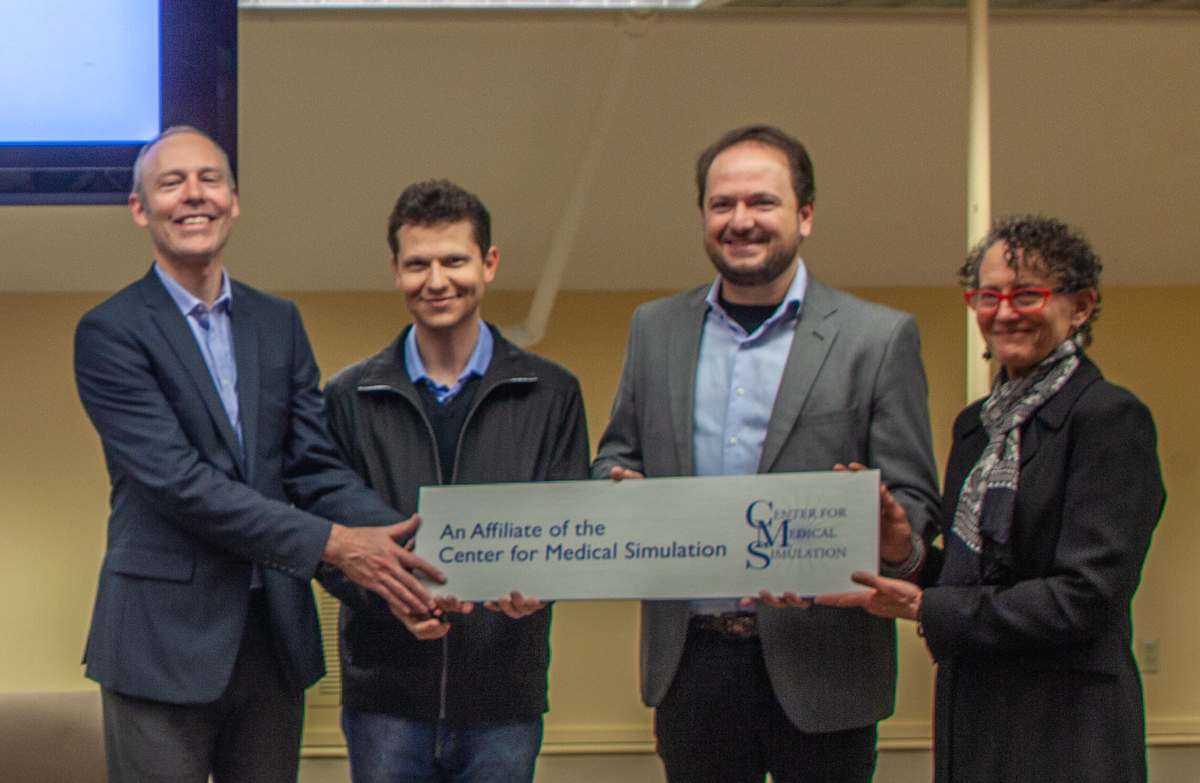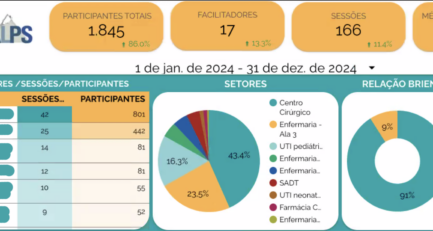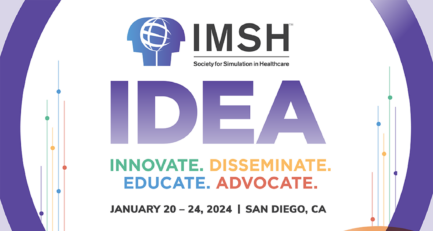
The Center for Medical Simulation continued to have productive and innovative work with our affiliate partners all around the world in 2022. Chris Roussin, PhD, our Senior Director of Educational Leadership and International Programs, leads continued efforts to position simulation and applied learning to solve problems for hospitals, health systems, and health professions education organizations.
“Circle Up” is a system of daily huddling and support for healthcare teams, and a new focus in our domestic and international consulting efforts. We are working with New York Health and Hospitals Corporation to implement Circle Up in two units in two hospitals, one Emergency Department and one Labor and Delivery department. In early 2023 we will work with Carilion Clinic in Roanoke Virginia to implement Circle Up in two units and to spread it more broadly throughout the health system to improve the well-being of, and support for, Carilion Clinic healthcare teams. Additionally, our affiliate partners at IMEPAC/HUSF and MultiCare have plans to implement Circle Up in the near future. The MultiCare simulation team already successfully uses Circle Up as an organizing and supportive teamwork approach.
AIXTRA (Aachen, Germany)
Dr. Gabriel Reedy has led from the CMS side, helping execute on a number of simulation-based learning and research projects. The team is building a simulation curriculum for the medical school as well as for the university hospital, and programs for the greater German language region. Our goal is to collaboratively create a center of excellence for German language simulation training.
Hong Kong Academy of Medicine
The Center for Medical Simulation was delighted to complete another year of collaboration and mentorship with the Hong Kong Academy of Medicine. This year we offered an Advanced Instructor Course which granted us the opportunity to work with advanced simulation instructors working across Hong Kong. A team of new virtual visiting scholars were mentored by Jenny Rudolph, Chris Roussin, Brad Morrison, Kate Morse, and Lon Setnik. The virtual visiting scholars designed and developed simulation-based interventions to improve clinical readiness in a variety of specialties, ranging from psychiatry to emergency medicine. We are looking forward to hosting 12 simulation educators through our partnership with HKAM to attend our Debriefing Assessment for Simulation and Healthcare Rater Training Workshop in March 2023.
IMEPAC / HUSF (Araguari, Brazil)
Our team is working with IMEPAC in Araguari, Brazil to prepare, design, and develop a new Chief Learning Office led by Henrique Arantes, MD, as the Chief Learning Officer. This effort enjoys tremendous support and sponsorship from top leadership including Dean José Júlio Lafayette and Dr. Marcelo Cardoso de Assis. This new learning office is part of the new hospital, HUSF (Hospital Universitário Sagrada Família), opening in 2023. The Chief Learning Office will include a patient safety department, simulation education program, academic learning academy, a clinical event debriefing office, as well as developing and leading an innovative new approach to morbidity and mortality meetings, among other elements. These efforts will roll out as part of a three-year process. We have also partnered to build a variety of simulation-based training programs in the medical school. The “Core Team” of simulation leaders at IMEPAC/HUSF includes diverse clinical and education leaders, committed to building a collaborative and world-class healthcare community.
Mater Education (Queensland, Australia)
Mater Health and Mater Education have committed to simulation leadership as part of a small group of strategic priorities for the organization. We are very excited to have a central role in helping to plan and build a simulation team and simulation strategy for this complex health system. We have started to do that with a number of new team members, guided by the leadership of Donna Bonney and Stephanie Barwick.
MultiCare
We have had a successful launch of our affiliation with the Multicare Health System. This relationship is led by Keith Jones, Director at The Center for Clinical Practice, Development, & Simulation at MultiCare Health System. The affiliation receives strong support from MultiCare leadership, with the goal of developing a sustainable simulation program that optimally serves the performance, safety and well-being of MultiCare clinicians, staff and patients. We have worked to guide and train a core team of simulation educators and curriculum developers through both our Healthcare Simulation Essentials course as well as specific simulation-based training and learning projects throughout the organization. Active projects include a specific focus on women’s health and stroke care initiatives. We are also supporting implementation of a new care model and training and integration of new nurses into the system.
Improving Emergency Readiness in Pediatric Dental Care
Lon Setnik led the team working with Richard Marn, MD, (CEO of Blue Pacific Medical Simulation) to create an in-situ simulation-based program to improve the readiness of pediatric dental offices to care for emergencies. The goals of this program were to build a fun, interactive, engaging program that helps pediatric dental offices be ready to care for the common emergencies that occur in their setting. Participants use their own equipment, rehearse emergencies, learn teamwork organization and implementation strategies. The program can be flexed into a 4-hour or 8-hour program to meet the individual organizations needs.
Medical College of Georgia
We worked with the Medical College of Georgia to design a next generation plan for implementing simulation-based education in the medical school curriculum. That involved a comprehensive process of interviewing education leaders across multiple campuses and designing new approaches to simulation education, as well as inspiring teams to move to a next new and improved generation of simulation education. This new process involved connecting activities required for initial and ongoing professional certification to simulation through the use of SimZones as a curriculum design heuristic.
